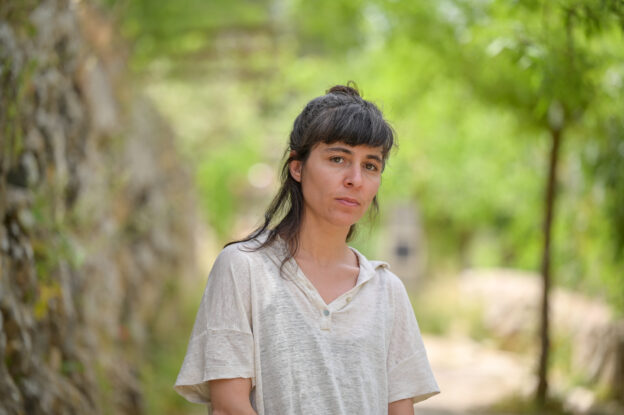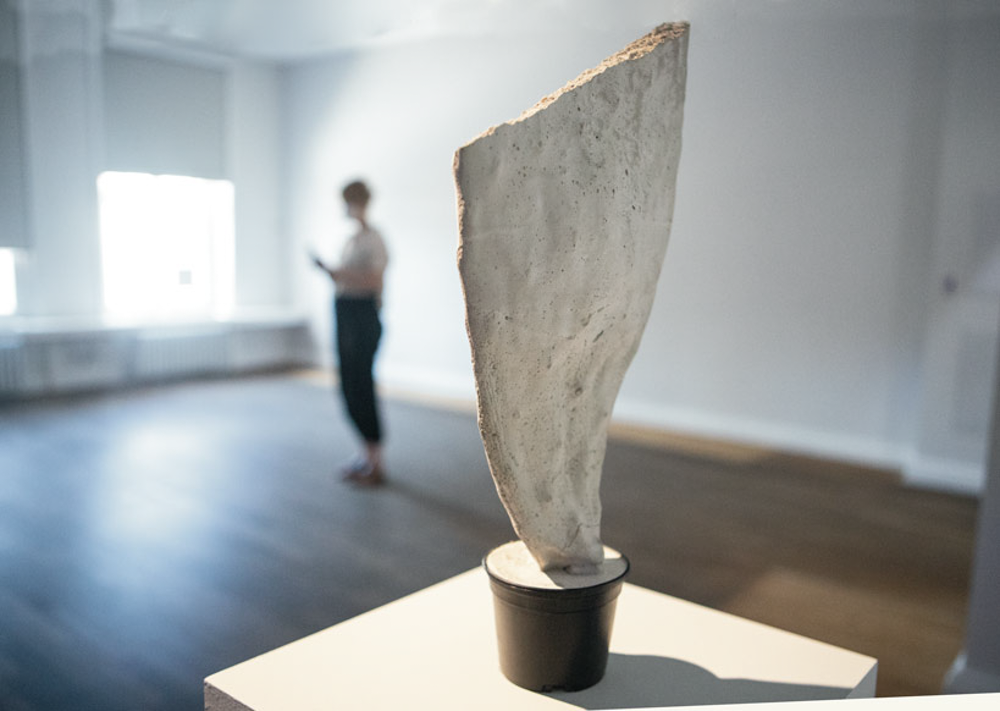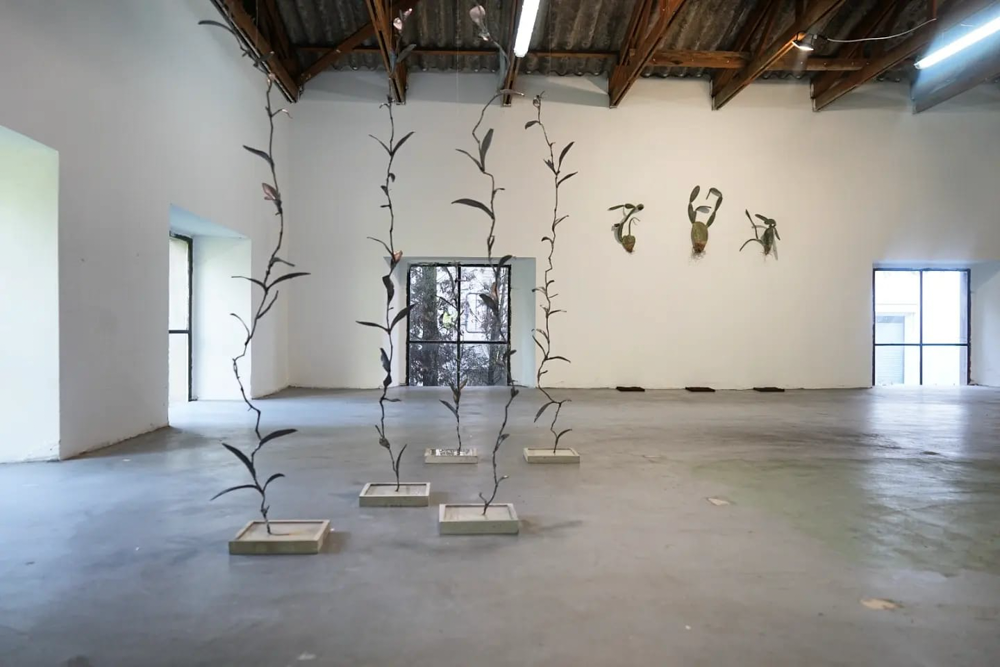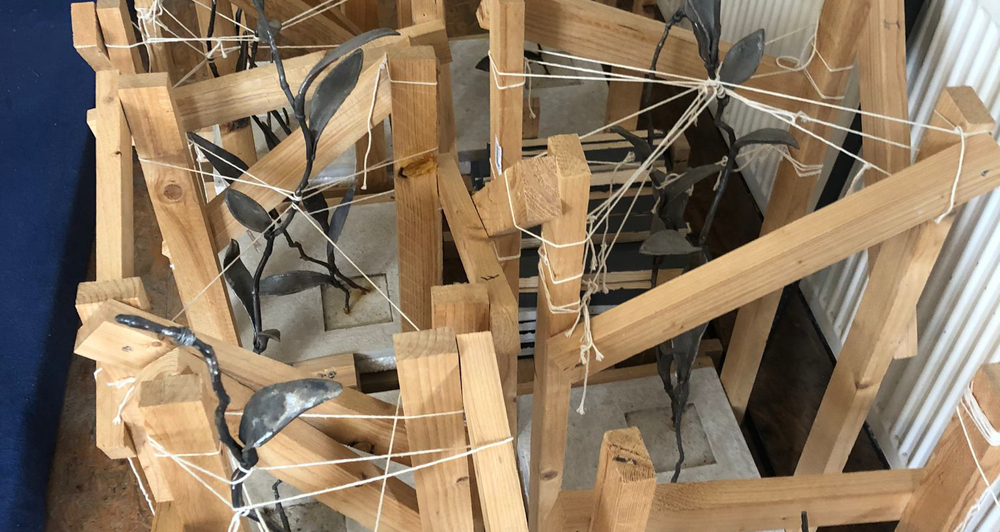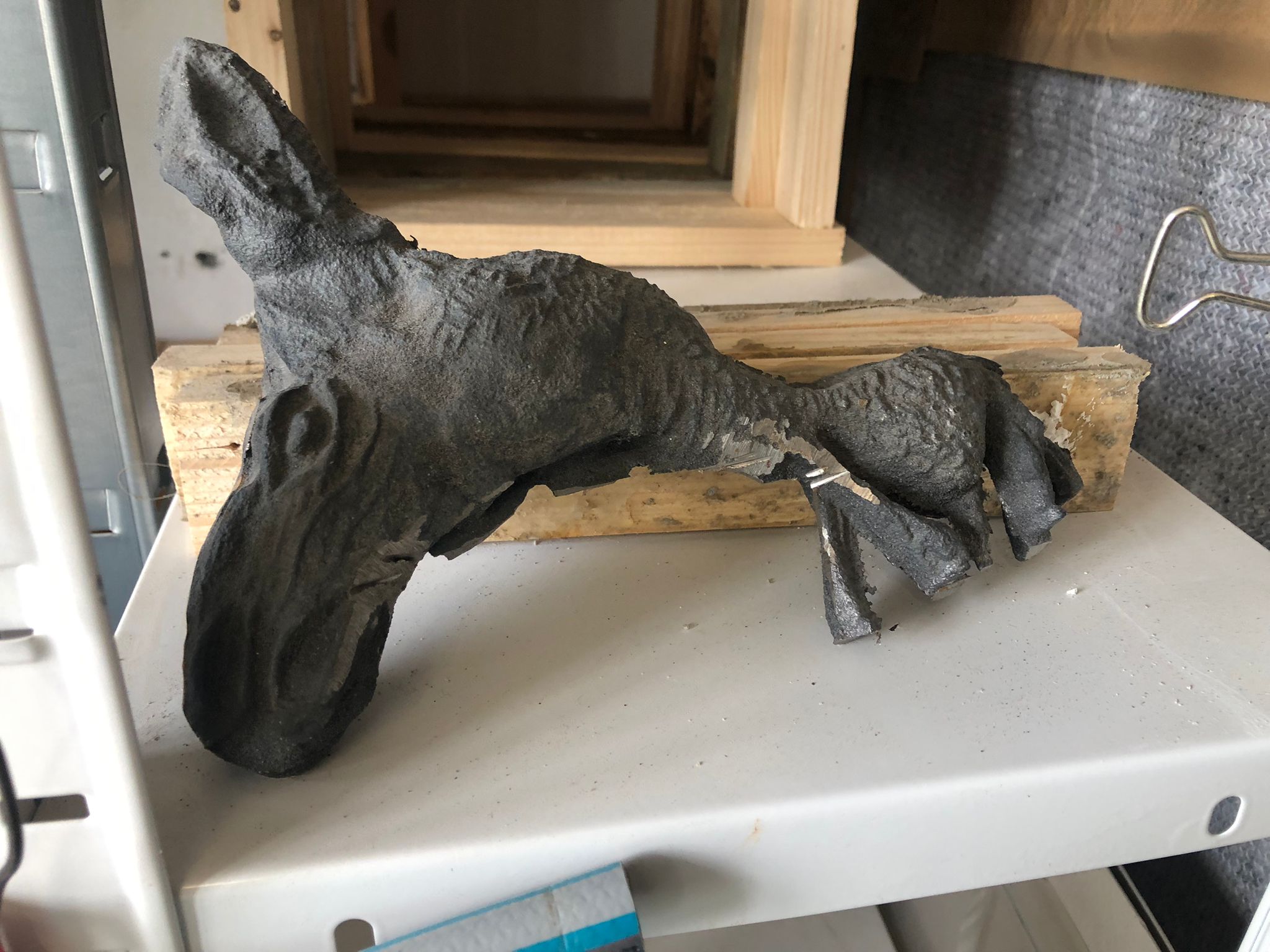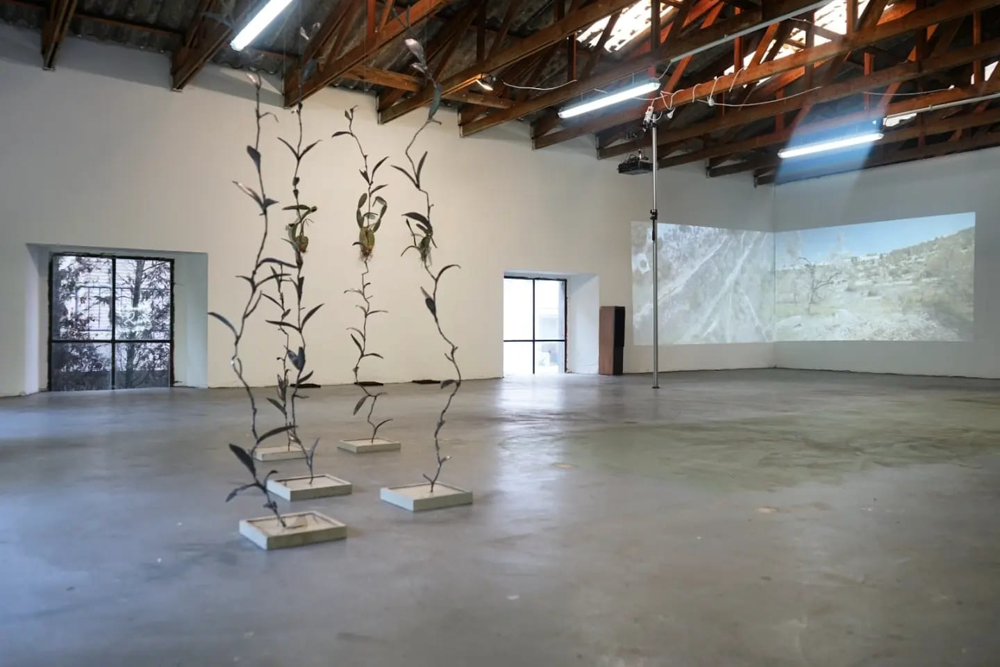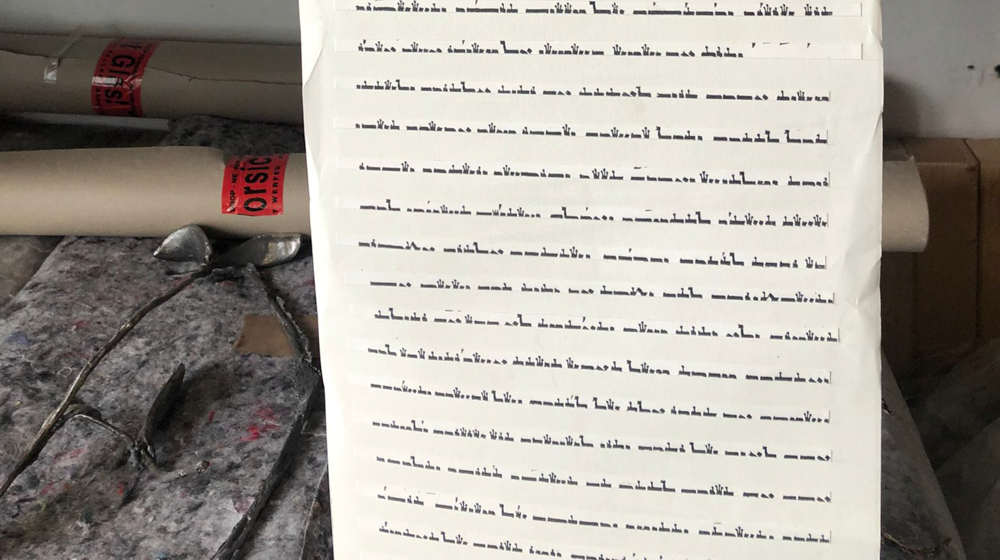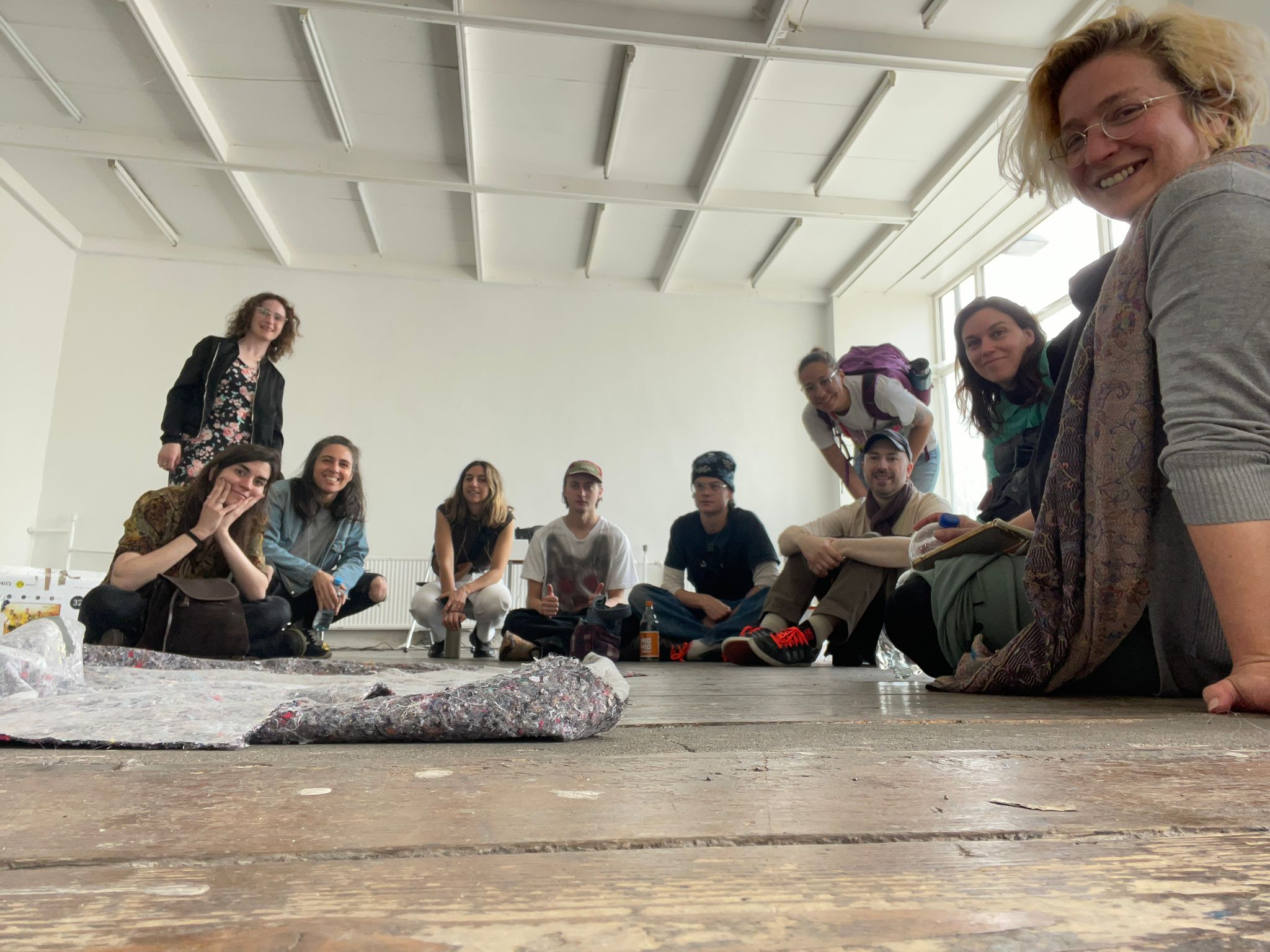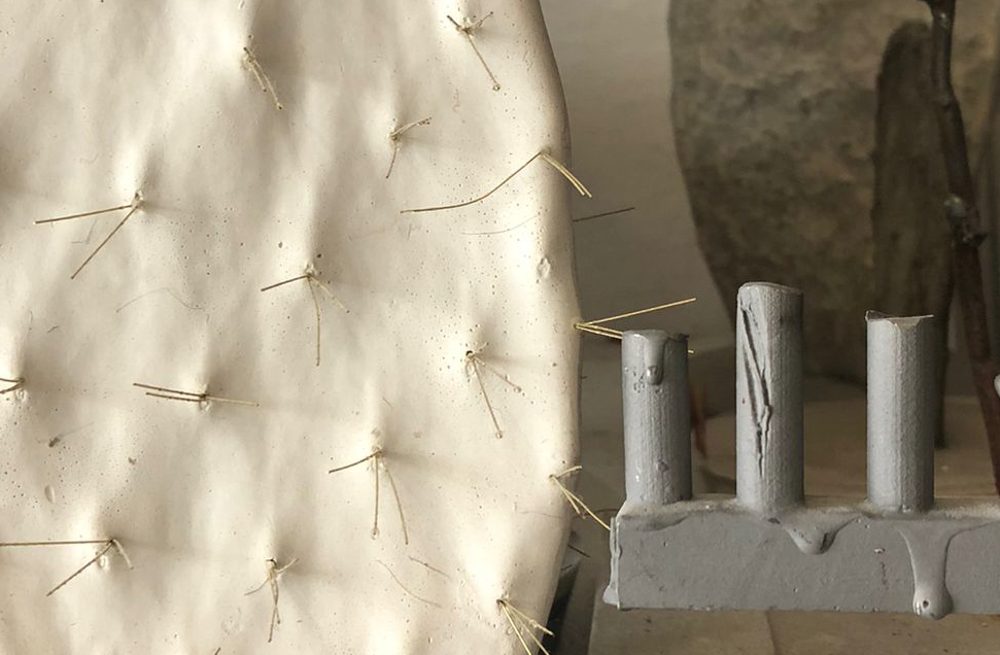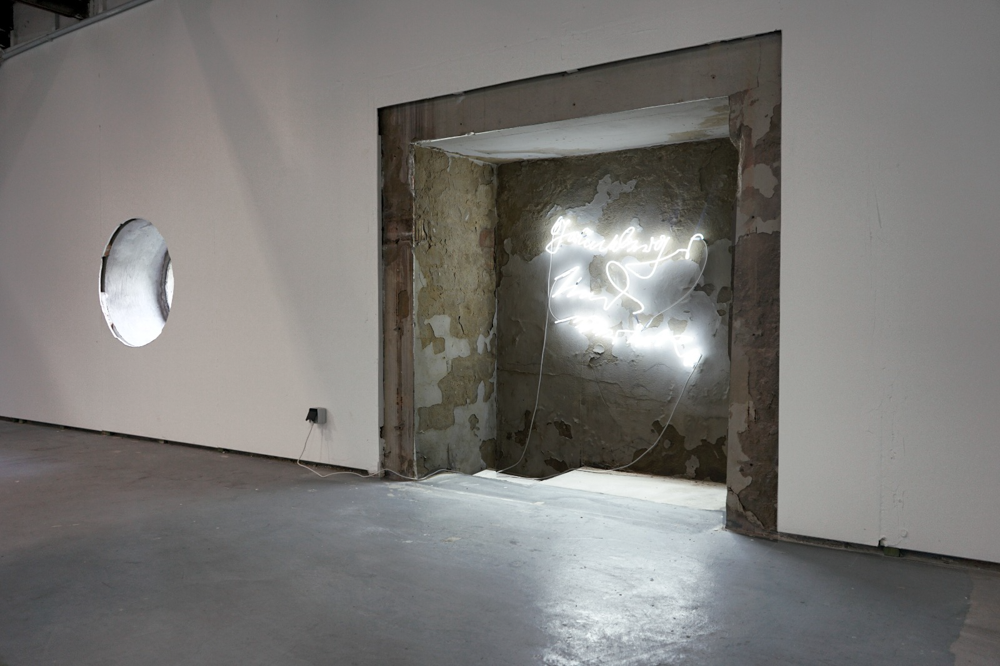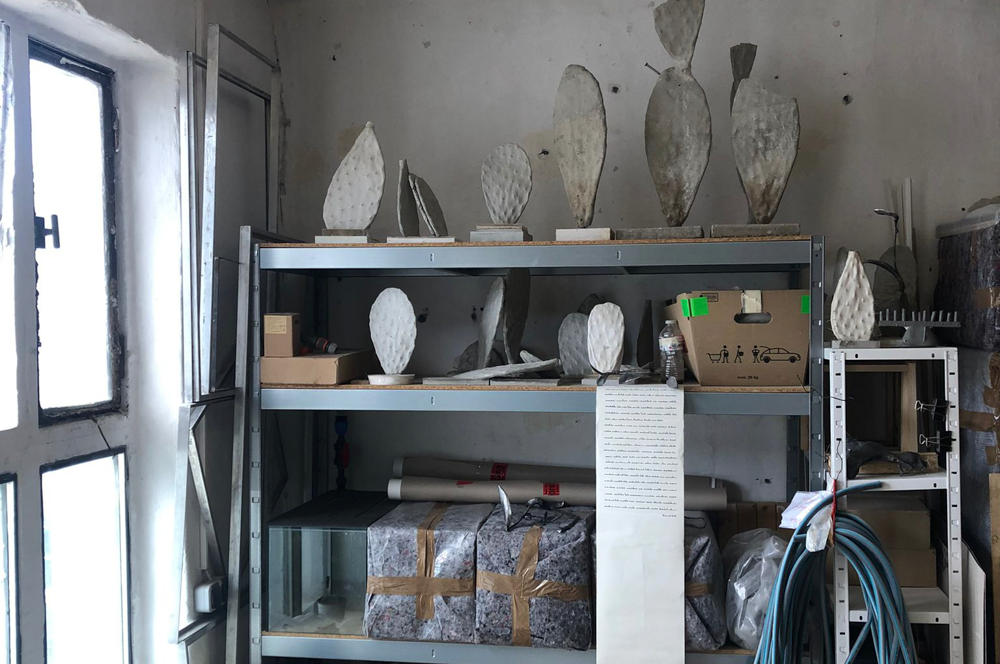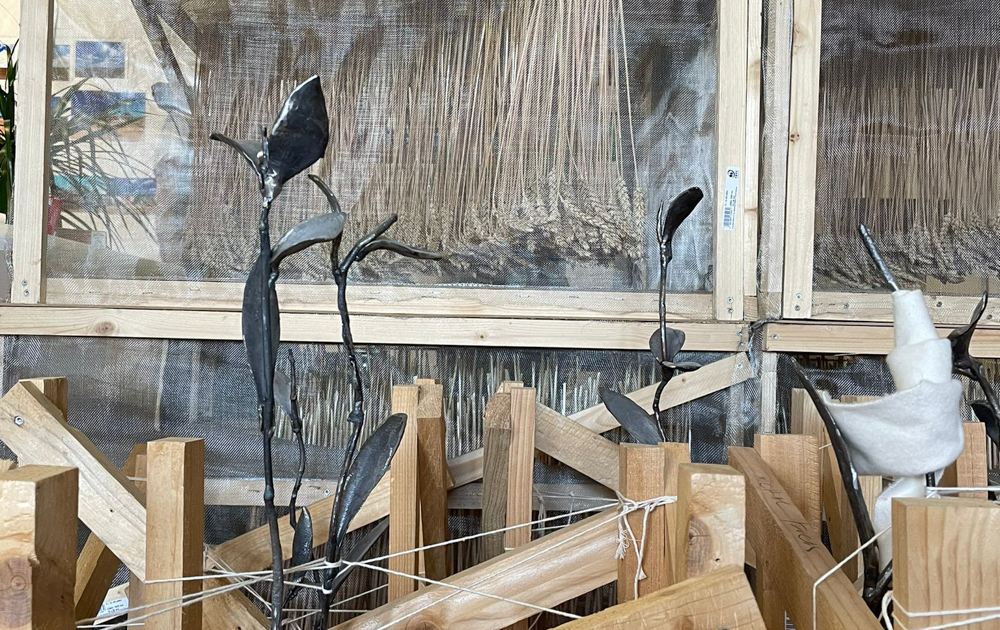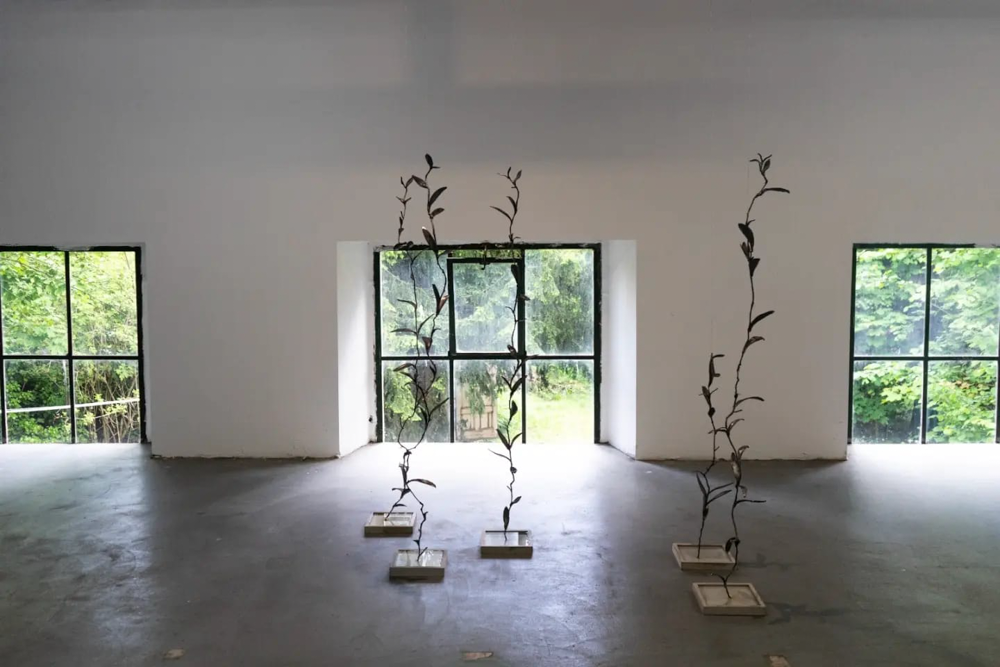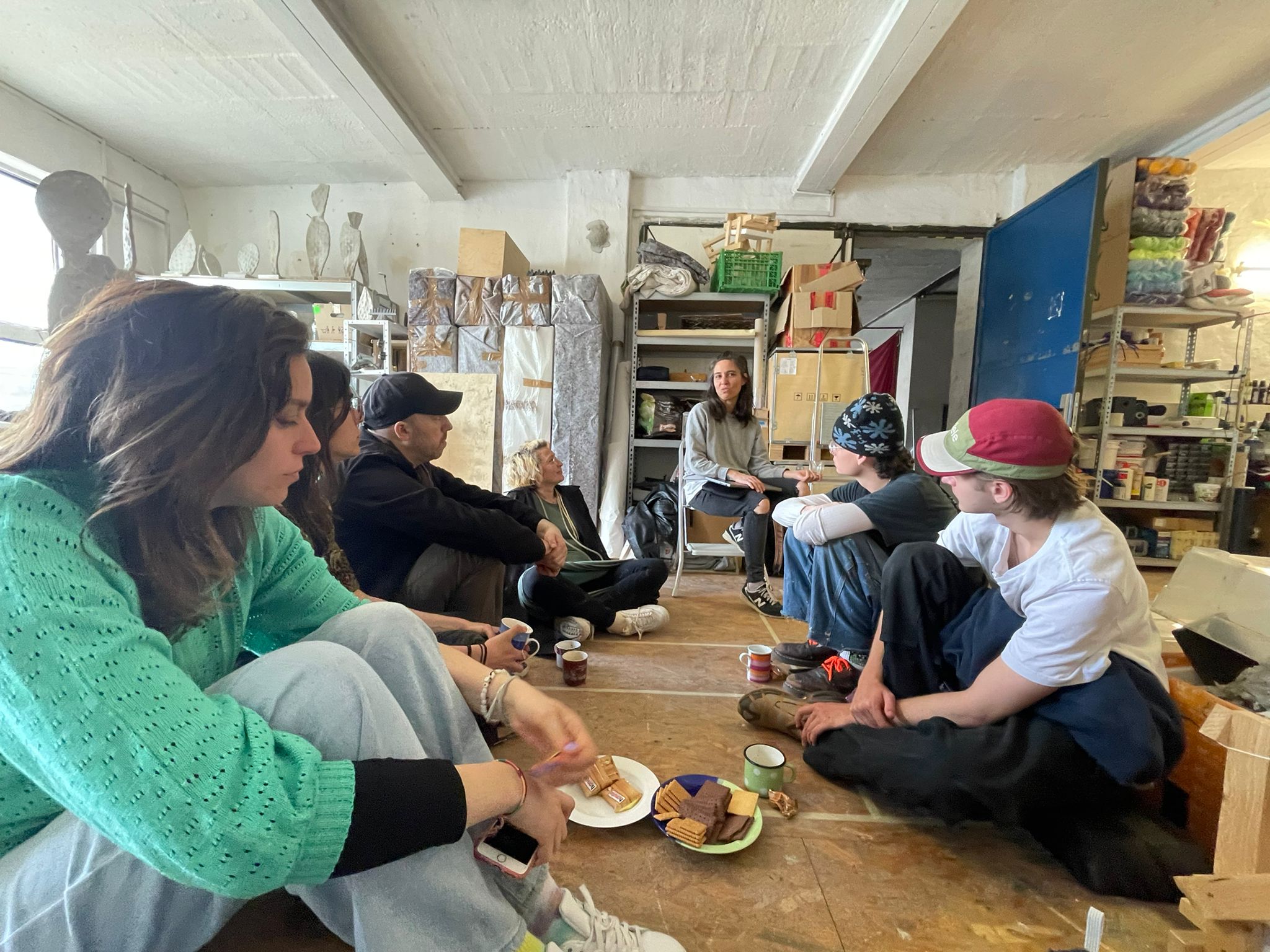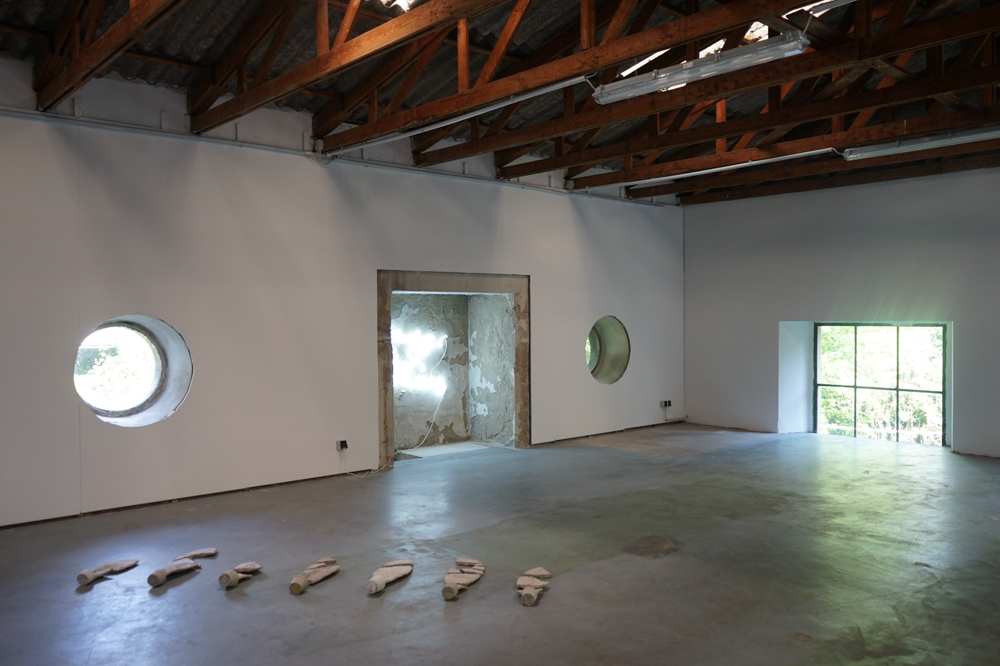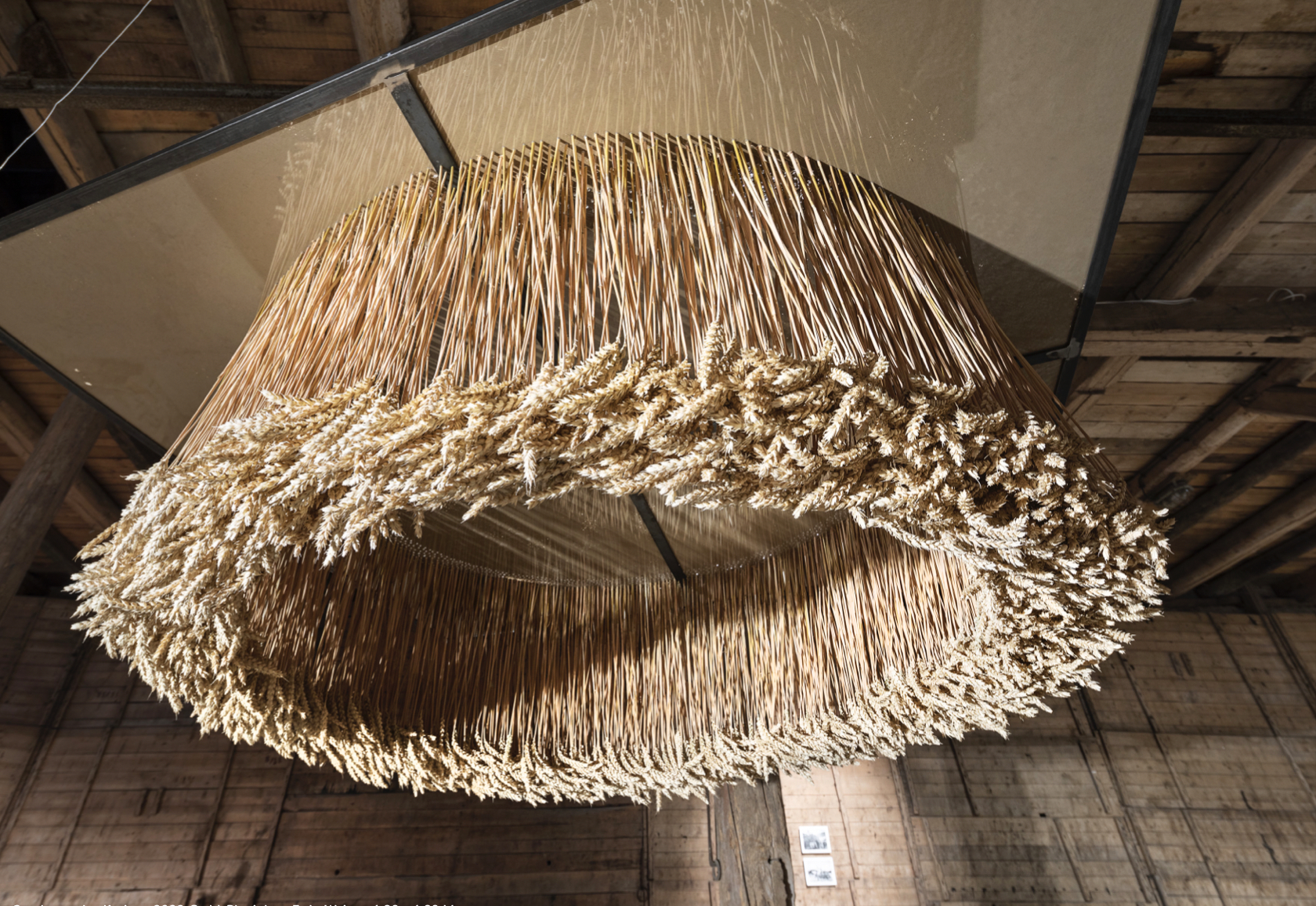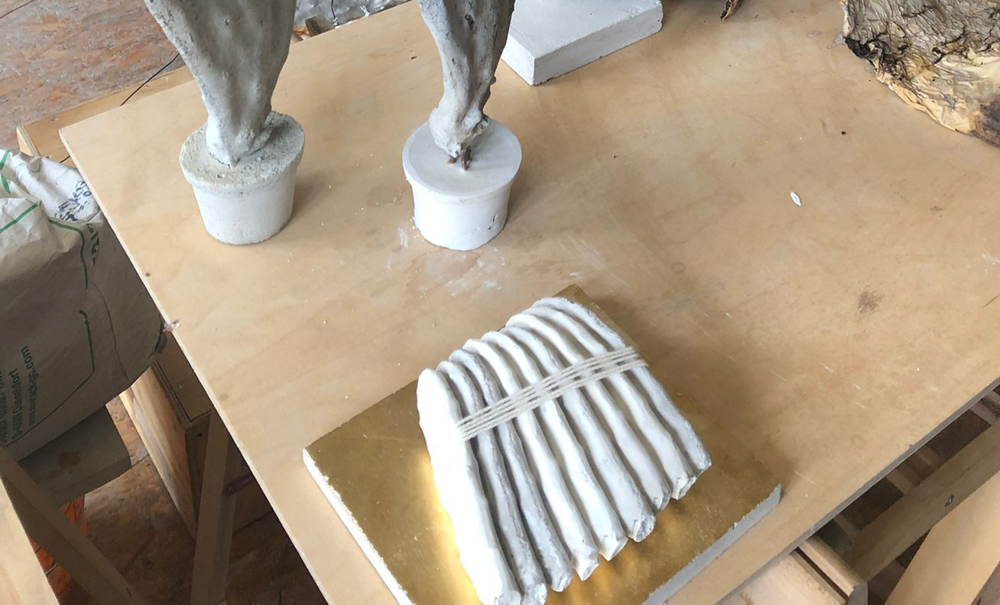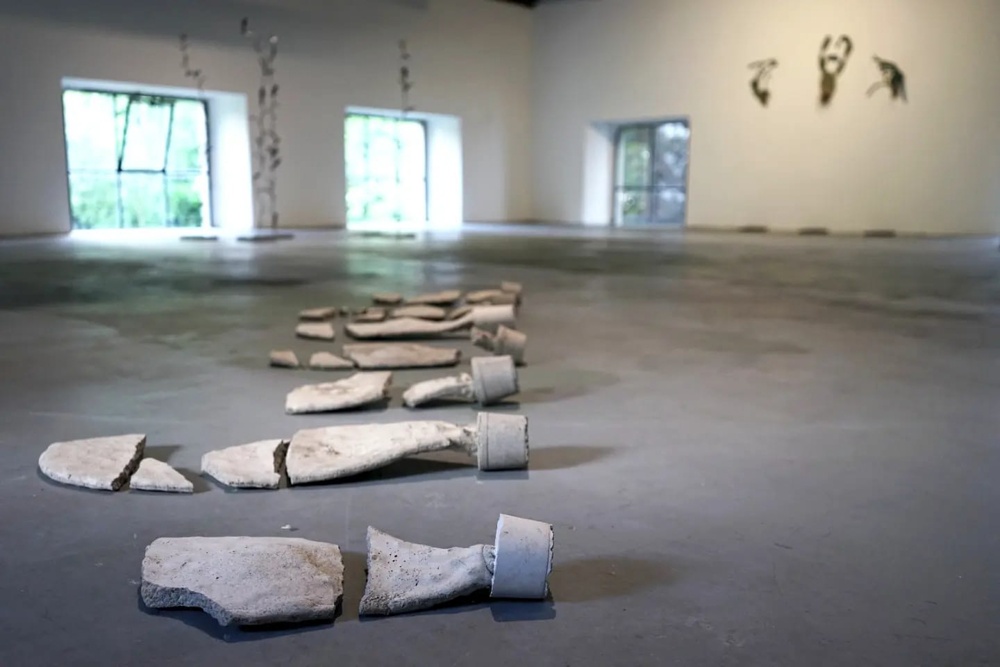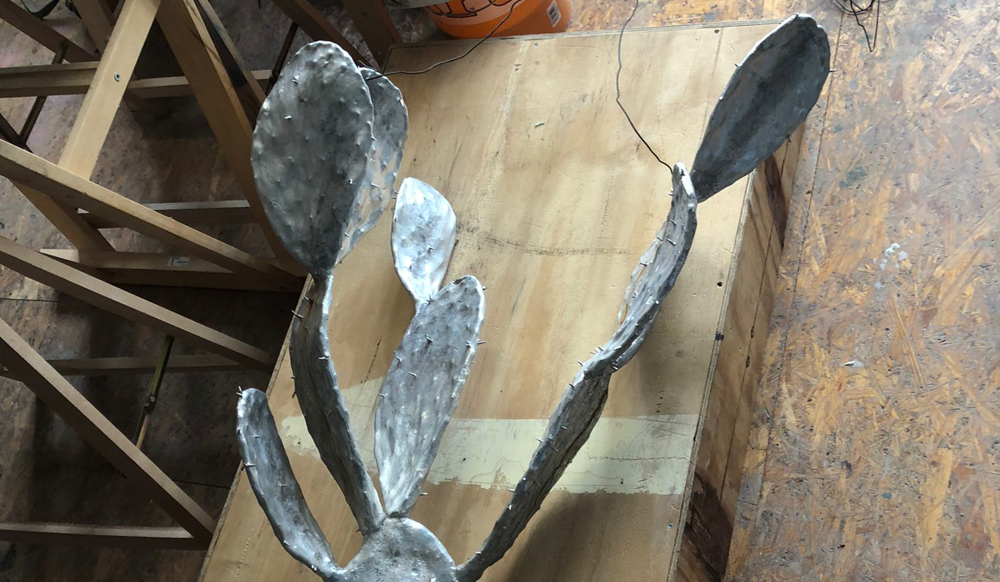One of the great advantages of a migrant perspective is the view from the outside. It is not a bird’s eye view, because you don’t have the privilege of seeing from above. Nevertheless, when looking from the side, contours sometimes stand out more sharply against the surroundings. Israeli born artist, Michal Fuchs has lived in Halle, Germany since 2014. This affords her a unique and multi-faceted perspective of the land of her birth.
Michal Fuchs, “tzabarit”
In the case of Michal Fuchs’ work, this displacement of perspectives multiplies in many ways. She is a “tzabarit”. This name, given to Jews born in Israel, originates from the word for cactus, “Tzabbar”. It grows wherever its leaf falls, produces the sweetest fruit and stands up to intruders. Tzabbar is often used as a fence.
Conversely, “Sabr” or “sabar”, the Arabic name for the same cactus, means “patience”. In the 1976 book Wild Thorns, Palestinian writer Sahar Khalifeh uses the cactus as a metaphor to describe life in the Palestinian territories. Palestinian painter Abu Shakar also painted this cactus in a flower pot to tell of his life as an Arab resident in Jerusalem.
In the work The Patriot, Michal Fuchs reflects on the ambivalence between the two readings. It consists of two similar yet different casts which directly refer to Abu Shakar’s paintings. However, her sculpture is made of concrete, the upper half is broken off and the flower pot is much too small. The work was included in the exhibition Transdisciplinary Church, the first show of RD55 curated by Caterina Fondelli
photos by PILOTENKUECHE or supplied by artist
You find the term “Zabbarim” in artist Oz Almog’s 2000 book The Sabre – the Creation of the New Jew. He highlights the differences between Jews born in Israel and those who grow up in the Diaspora. One such example is that all women, like men, are trained in military service in Israel. This leads to a completely different understanding of society in contrast to the often very traditionally educated grandparents of those raised outside Israel.
Michal’s fragmented perspectives
An essential part of Michal’s work is the German point of view of her sculptures and installations. The notable shift of perspective includes the bearing of historical guilt and the difficulties in finding a new relationship to responsibility. Her art lets the hard edges of the dichotomy between perpetrators and victims -not historical but actual- become a little bit blurred.
A work that stands out as being in the middle of the conflicting feelings and certainties about what defines antisemitism in Germany is her work Grünebergs sind verrückt (Grünebergs are crazy). Michal Fuchs created it this year for her solo exhibition curated by Dirk Raulf for the cultural center of the Lippstadt synagogue. The Foundation for the Promotion of Art of the Sparkasse Lippstadt, purchased the work and the site-specific piece will remain there permanently.
previously obvious gains potential alternative meaning
Michal Fuchs found and copied lettering from a wooden door dating before the synagogue was destroyed. At first glance, she thought it antisemitic graffiti, but an analysis of the Sütterlin script showed that it was not so clearly identifiable. The sentence, “Grünebergs sind verrückt “ (Grünebergs are crazy) could be an antisemitic motivated text, but there might also be another explanation. The specific location, within the yard of the synagogue, begs the question, “Who had access?” The family was well known. Dr Grünberg was a doctor in Lippstadt at that time. It is possible that a child had been reprimanded by one of the Grünebergs during Torah study. Perhaps in the break, they expressed their frustration at an unjust or just educational measure on this door.
Thus perspectives change. This shift in perspective is why Michal Fuchs realised this piece as a neon sign. Her work highlights the ambivalence she is confronted with as an Israeli in Germany. How does one handle historical and current demands in a responsible search for a balance? Historian and political philosopher Hannah Ahrendt poses the question, “Who has the right to have rights?” The participants’ viewpoint splinters another reflection.
written by Julianne Csapo
Want to know more and stay up to date with what Michal is doing? Keep up with her on instagram and her website.
TRANSDISCIPLINARY CHURCH
Vernissage 20 May 7-10 PM
Performance 8PM
Alte Handelsschule
Giesserstr 75
04229 Leipzig
Open Sun 21, Sat 27, Sun 28 May 4-8PM
cotidianidad freedom
Vernissage 17 June 7-10 PM
Open Sun 18 – Wed 21 June 4-8 PM
PILOTENKUECHE
Franz-Flemming-Str 9
04179 Leipzig

